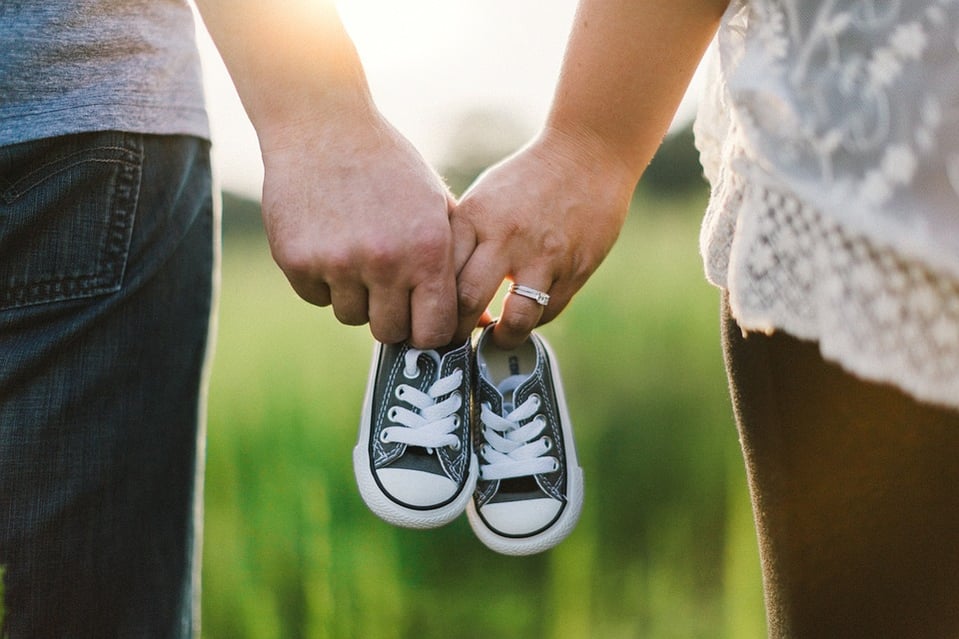 Children adopted from interntional institutions are resilient. Once in a forever family they flourish! Click here to learn more about international adoption.
Children adopted from interntional institutions are resilient. Once in a forever family they flourish! Click here to learn more about international adoption.
“Our daughters are here” we all whispered as we heard our children being escorted into the adjoining room in the provincial office in China. We excitedly, nervously and quickly finished our required adoption documents; wanting more than anything to hold our daughters. Finally, my daughter appeared bundled in three layers of clothes wearing bright yellow socks held by a petit, older Chinese woman who looked at me with a sorrowful smile. My daughter turned 9 months old that day. She had spent her first 9 months in a Social Welfare Institute and now will spend the rest of her life in our home and loving family.
My daughter came to me gladly without a tear or struggle. She gulped down a bottle and fell asleep. It seemed all too easy. When she awoke, we both woke up to the reality of the situation. I began to realize the challenges that lay ahead. At 9 months of age, my daughter was unable to roll-over, sit-up , reach for or play with a toy, or appropriately socially interact with others. Within the first 24 hours and after hours of massage and baby exercises, my daughter rolled-over for the first time and the following day looked at herself in an infant mirror. Four days later my daughter reached for toys and blew raspberries. By the time we got on the plane to come home ten days later, my daughter was sitting up unassisted for a few moments, giggling, and “talking” with me. Five weeks after arriving home, my daughter was crawling and babbling; three weeks later she was pulling herself up to a stand; and at age 12 months she was walking. It was like watching development in fast forward. Today, my daughter is a bright and active child who lives life with enthusiasm and vigor.
Hundreds of thousands of other children, like my daughter, are waiting in orphanages around the world. They are faced with unthinkable challenges as they strive to survive without a loving family. I will never forget the blank faces of the children lined-up on my daughter’s orphanage patio strapped into bouncy seats and walkers staring at gray walls with no toys, music, books, pictures, or people to engage their developing minds. Imagine an infant or young child laying in a bed hungry, bored, and crying to get the attention of one of the few busy caregivers; wanted to be fed, played with and held. It is easy to understand how institutionalized children are at risk for developmental challenges. Children waiting in orphanages are too often surrounded by a sterile, unresponsive and uninteresting environment. It is estimated that for every three to five months in an institution, a child loses approximately one month of overall development. Institutionalized children are at risk for delays in their language, motor, sensory, cognitive, and social/emotional skills. However, they are incredibly resilient.
Institutionalized children have a great capacity to recover from the effects of institutional care once in the care of a loving and nurturing family. Again and Again I have witnessed the amazingly quick development of skills within days and months of a child joining a family. Developmental delays usually improve rapidly after adoption into a loving home with many institutionalized children making developmental gains faster than the normal maturation curve. Parents and researchers both report rapid growth in cognitive, language, motor, social, emotional, and attachment development during the first year home. It is estimated that for the majority of children institutional variables no longer influence development three years after adoption. The best predictor of positive outcomes for the child is the “fit” with the family and the health of the parent-child relationship.
It is truly miraculous to see a child’s development flourish under the care of a loving family. Every day as I watch my children play, learn and love, I am awed by their daily growth and development. Every institutionalized child deserves a family who can nurture their resilient spirit.
Family Connections, Inc. is an authorized New York State adoption agency that provides home study services and post-adoption support to families adopting from around the globe. To learn more about our agency's services, please contact Renee at 607-756-6574 or 1-800-535-5556 or renee@adoptfamilyconnections.org. You can also download a free presentation regarding international adoption by clicking below. We look forward to supporting your international adoption plan.




Let Us Know What You Thought about this Post.
Put your Comment Below.